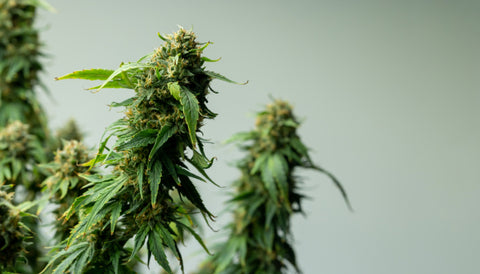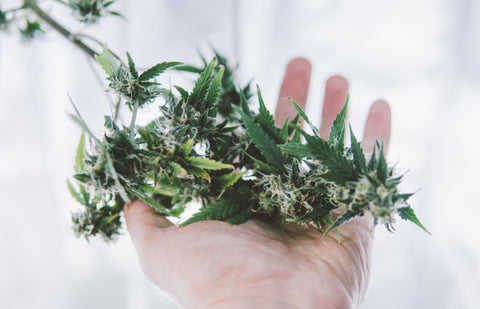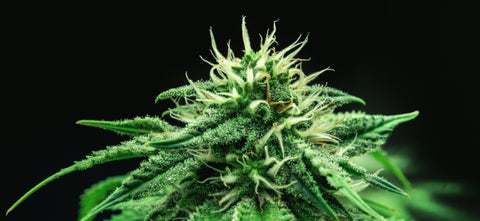Cannabis, a plant that has fascinated and served humanity for millennia, is as complex as intriguing. Known mainly for its sativa and indicate varieties, cannabis offers a diversity that goes beyond these well -known types. For cultivators, both fans and professionals, understanding the subtleties of this plant is not only a passion, but a need to achieve successful crops. Among these subtleties, is the existence of hermaphrodite marijuana, a peculiar phenomenon and of great relevance in the world of cannabis cultivation.
Unlike commonly masculine or female plants, hermaphrodite marijuana has characteristics of both sexes. This peculiarity can have significant implications in the quality and viability of the harvest, turning the subject into one of the most discussed and studied among the cultivators. Identifying and understanding how to handle the hermaphrodite cannabis plants is crucial to ensure the integrity and purity of the buttocks obtained.
Hermaphroditism is not considered completely one of the Pests and diseases of marijuanaHowever, it is a concern for growers. Hermaphrodite marijuana is a plant that develops both female and masculine flowers. This can reduce the quality and quantity of the harvest, since male flowers can pollinate female, reducing the production of buds. To prevent it, select genetically stable strains, avoid environmental stress, such as sudden changes of light or temperature, and perform regular inspections to detect and eliminate any sign of male flowers early.

What is hermaphrodite marijuana?
Hermaphrodite marijuana is a fascinating and at the same time challenging phenomenon in the world of cannabis culture. This term refers to cannabis plants that simultaneously develop male and female reproductive organs. Under normal conditions, cannabis plants are usually dioacious, which means that there are separate male and female plants. However, in certain circumstances, some plants can exhibit characteristics of both sexes; That is, they can produce female flowers (buds) and at the same time develop typical pollen bags of male plants.
This sexual duality in the same plant is what characterizes hermaphrodite marijuana. While female plants are valued by their rich cannabinoids, and masculine are mainly important for reproduction and raising new varieties, hermaphrodites can complicate the crop. The presence of both sexual organs in a single plant can lead to self-pollinization and cross pollination with other female plants in the crop, resulting in seeds in the buds, which is generally undesirable for most growers, since it reduces the quality and power of the harvested buds.
Understanding the differences between hermaphrodite plants and normal cannabis plants is essential for growers. While female plants produce the appreciated seeds without seed, and the masculine are easily identified by their pollen sacks, the hermaphrodites require more detailed observation. It is important for cultivators to recognize the early signs of hermaphroditism to take appropriate measures, thus guaranteeing the purity and quality of their harvest.
Causes of Hermaphroditism in cannabis
Hermaphroditism in cannabis plants can be the result of a variety of factors, the most influential environmental conditions and genetics being. Understanding these causes is crucial for growers who seek to prevent the appearance of hermaphrodite plants in their crops.
Environmental factors
Marijuana plants are exceptionally sensitive to their environment, and certain stress conditions can trigger the development of hermaphrodite characteristics. These stress factors include, but are not limited to:
- Sudden changes or inconsistencies in the light cycle: Cannabis depends on regular light cycles for sexual development. Unexpected interruptions or changes in the regime of lightning They can confuse plants, leading them to develop sexual organs of both sexes.
- Physical damage or excessive pruning: Physical injuries or too aggressive pruning can stress the plant, which potentially triggers hermaphrodite responses as a survival mechanism.
- Deficiencies or excesses of fertilizers: An imbalance in nutrition can also be a stressful factor that causes hermaphroditism.
- Extreme temperatures or fluctuations: Cannabis prefers a stable temperature range; Extreme variations can induce stress and, as a result, hermaphroditism.
Genetic factors
In addition to environmental conditions, genetics plays a crucial role in the tendency of a plant to develop hermaphrodite characteristics. Some cannabis varieties are genetically more likely to become hermaphrodites, especially if they have been raised or manipulated so that they predispose this characteristic. The careful selection of seeds and varieties with a known history of genetic stability can significantly reduce the risk of hermaphroditism.

Hermaphrodite marijuana identification
The ability to quickly identify a hermaphrodite marijuana plant is essential to maintain the integrity of a crop. Here is a detailed guide on hermaphrodite marijuana as identifying:
- Look at the appearance of organs of both sexes: The most distinctive characteristic of a hermaphrodite plant is the presence of male and female reproductive organs. Look for pollen bags (typical of male plants) and pistils or cogollos (characteristic of female plants) on the same plant.
- Examine the nodes: The nodes are the points where the branches join the stem. In hermaphrodite plants, you can often find pollen bags and buds developing in proximity in these nodes.
- Watch the early signs: Before pollen bags open, they appear as small green or yellowish bags. Detecting them early can prevent self-pollinization or pollination of other female plants.
- Regularly review during the flowering phase: Hermaphroditism is usually more evident during the flowering stage. Perform regular inspections during this critical period.
- Pay attention to stressed plants: Since stress can induce hermaphroditism, pay special attention to plants that have been subjected to stress, either by physical damage, nutrient problems, or fluctuations in the light cycle.
Impact of hermaphrodite buds on harvest
The presence of hermaphrodite buds in a cannabis culture can have significant consequences both in the quality and in the quantity of the harvest. Next, the main ways in which these buds can affect the final performance are detailed:
- Power and quality reduction: Hermaphrodite buds tend to be less powerful in terms of cannabinoid content compared to purely feminine buds. This is because the energy of the plant is diverted towards the production of seeds instead of developing dense and rich buds in trichomes.
- Presence of seeds: One of the most notable impacts of hermaphrodite buds is the generation of seeds. When pollen bags of a hermaphrodite plant open, they can pollinate not only the plant itself but also to other nearby female plants. This results in buds with seeds, which are generally considered of lower quality in the market and less desirable for consumption.
- Decrease in general performance: The formation of seeds in the buds consumes resources of the plant that would otherwise dedicate themselves to the development of larger and resinous flowers. This can lead to a decrease in the total harvest volume.
- More laborious management: The harvest and processing of hermaphrodite plants may require more work. The separation of the seeds of the buds is a tedious process and consumes time, which increases the effort required in the post-harvest.
- Risk of propagation of hermaphroditism: If the seeds produced by a hermaphrodite plant are used for future crops, there is a risk that these seeds inherit the tendency to hermaphroditism, which can perpetuate the problem in successive crops.

Strategies to prevent hermaphroditism in cannabis
Preventing the development of hermaphrodite marijuana plants is crucial to ensure a high quality harvest. Next, some strategies and advice are presented to minimize the risk:
- Careful selection of seeds and genetic: Start with seeds or clones of reliable and reputable sources. Opt for genetically stable and known varieties for its resistance to hermaphroditism.
- Keep a stable culture atmosphere: Cannabis plants are sensitive to their surroundings. Maintain constant conditions in terms of light, temperature and humidity to avoid unnecessary stress.
- Avoid interruptions in the light cycle: During the flowering phase, it is essential to maintain a consistent light cycle and without interruptions to prevent stress that hermaphroditism can cause.
- Carefully handle plants: Avoid damaging plants with aggressive pruning or abrupt manipulations. Soft management can reduce stress and risk of hermaphroditism.
- Watching nutrition closely: Make sure your plants receive the right amount of nutrients. Both excess and deficiency can cause stress that could lead to the development of hermaphrodite characteristics.
- Perform regular inspections: Inspect your plants regularly to detect early signs of hermaphroditism. Early detection allows measures to affect the rest of the crop.
- Consider the use of hormones or supplements: In some cases, the use of hormones or specific supplements can help stabilize the sexual development of plants and prevent hermaphroditism.
- I isolate new or suspicious plants: If you introduce new plants to your crop or if you suspect that a plant can be a hermaphrodite, keep it isolated until you confirm your sex.
- Educate your team: If you work with a team of cultivators, make sure they are all informed about how to prevent and manage hermaphroditism in cannabis.

